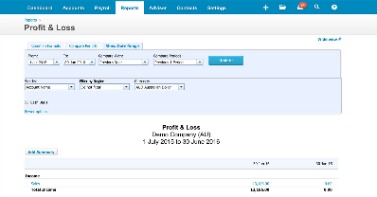Content

The partner must notify the partnership within 30 days or by end of partnership’s taxable year, whichever is later. The partnership may rely upon information provided by partner unless it has knowledge of facts indicating that the information is clearly erroneous.
What is outside basis in a corporation?
A tax investor's tax or outside basis is equal to the total of : the capital contribution by the investor (initial capital contribution or amount paid by the tax investor), additional capital contributions (not generally there), dividends paid from the pre-tax cash flow distributions (that are subtracted)
Because his basis has been reduced to zero, he takes a zero basis in the distributed property under Section 732. Although the ordering rule increases the likelihood that a distribution of money will not be taxable to the partner, it also reduces their ability to deduct losses. 66-94, in which the consequences of a current distribution were determined based only upon the capital contribution made by the distributee partner earlier in the year and without regard to the overall loss allocated to him at the end of the year.
Gains and Losses Realized and Recognized for Nonliquidating Distributions
At the end of the fiscal year, each partner will then have to report the proportion of business profits or losses on his or her income tax statement as per the US Internal Revenue Code requirements. Typically, a partnership will operate a business and must then flow down all profits and losses to its partners. On the other hand, an inside basis refers to a partner’s interest in all of the partnership assets.
SECURE 2.0 Webinar Series: The Law Passed. Now What? – PLANSPONSOR
SECURE 2.0 Webinar Series: The Law Passed. Now What?.
Posted: Fri, 24 Feb 2023 23:30:33 GMT [source]
I also worked with Pacificare as a senior tax analyst, project manager of finance, and consultant in the human resources department. If you have any more questions about basis in a partnership or other tax help you can fill out our questionnaire and book a discovery meeting to see how we can help. Thus, we should all stay up to date with tracking our basis annually and we should have an end vision in mind when working through it. It is vital to track the basis from the beginning day one and keep tracking it. And consider saving all Schedules K-1 to the partnership’s permanent file in case basis needs to be re calculated or reviewed.
Texas Corporation Search (Guide: All You Need To Know)
He is admitted to the New York State Bar, the Federal District Courts of the Southern and Eastern Districts of New York, the Second Circuit Court of Appeals, and the U.S. Mr. Surkin holds the faculty appointment of Professor at Pace University Graduate School of Business where he teaches taxation of entities.
This means that you should set-up a beginning https://intuit-payroll.org/ and a closing balance for the debt at the partnership level and then allocate that debt to the tax equity investor and the sponsor/investor. The tax investor basis includes its share of liabilities of the LLC – for example, debt at the partnership level. This implies that any change in those liabilities (either through increased borrowings, debt payments or changes in the ratio in which those liabilities are shared among the Member’s) results in a change in the tax investor’s basis. A reduction in the tax investor’s share of liabilities is treated as a Constructive Cash Distribution reducing basis.
Tax Tools & Tips
If, however, a distribution is part of a series of distributions that will result in the termination of the partner’s interest, the distribution is not a current distribution. Thus, current distributions include both distributions of a partner’s distributive share of partnership income as well as distributions in partial liquidation of a partner’s interest (i.e., distributions that are a return of a partner’s investment in the partnership). At that point, the partner’s outside basis is adjusted, hopefully upward, to reflect their share of the partnership’s operations for all of the current year (not only up to the date of the “advance”). It is this adjusted outside basis with respect to which the tax consequences of the deemed year-end distribution are determined.
- Practitioners are well aware that a partner’s basis can and often does differ from the partner’s capital account.
- For purposes of paragraph , if a corporation acquires stock the basis of which is determined in whole or in part by reference to subsection or , the corporation shall be treated as receiving a distribution of such stock from a partnership.
- Recording what each initial partner contributes to the partnership is essential to determine their tax basis, including whether they’ve established a loss or gain, and therefore their tax obligations.
Outside basis represents each partner’s basis in the partnership interest. Each partner “owns” a share of the partnership’s inside basis for all of its assets, and all partners should maintain a record of their respective outside bases.
Partner’ Basis of Partnership Assets Received in a Nonliquidating Distribution
Their outside basis would decrease to $15,000 (their initial contribution – their gain from the partnership). The basis in an investment refers to a party’s economic interest in the investment. In other words, it is used to describe the amount of value that you’ve imparted to the investment.
Can partnership distributions be disproportionate?
A distribution is disproportionate if a partner receives more or less than his pro rata share of IRC 751(b) “hot” assets. Partnership distributes money and/or property to a partner.
Like any other Partnership Distributions, Inside And Outside Basis , a partnership interest may be acquired through a gift or an inheritance. Additionally, a partner may contribute property and/or cash in exchange for a partnership interest. Lastly, a partner may contribute services in exchange for a partnership interest. The partner’s initial outside basis depends on how the interest was acquired. The partner’s share of percentage depletion deductions exceeding the adjusted basis in depletable property.

